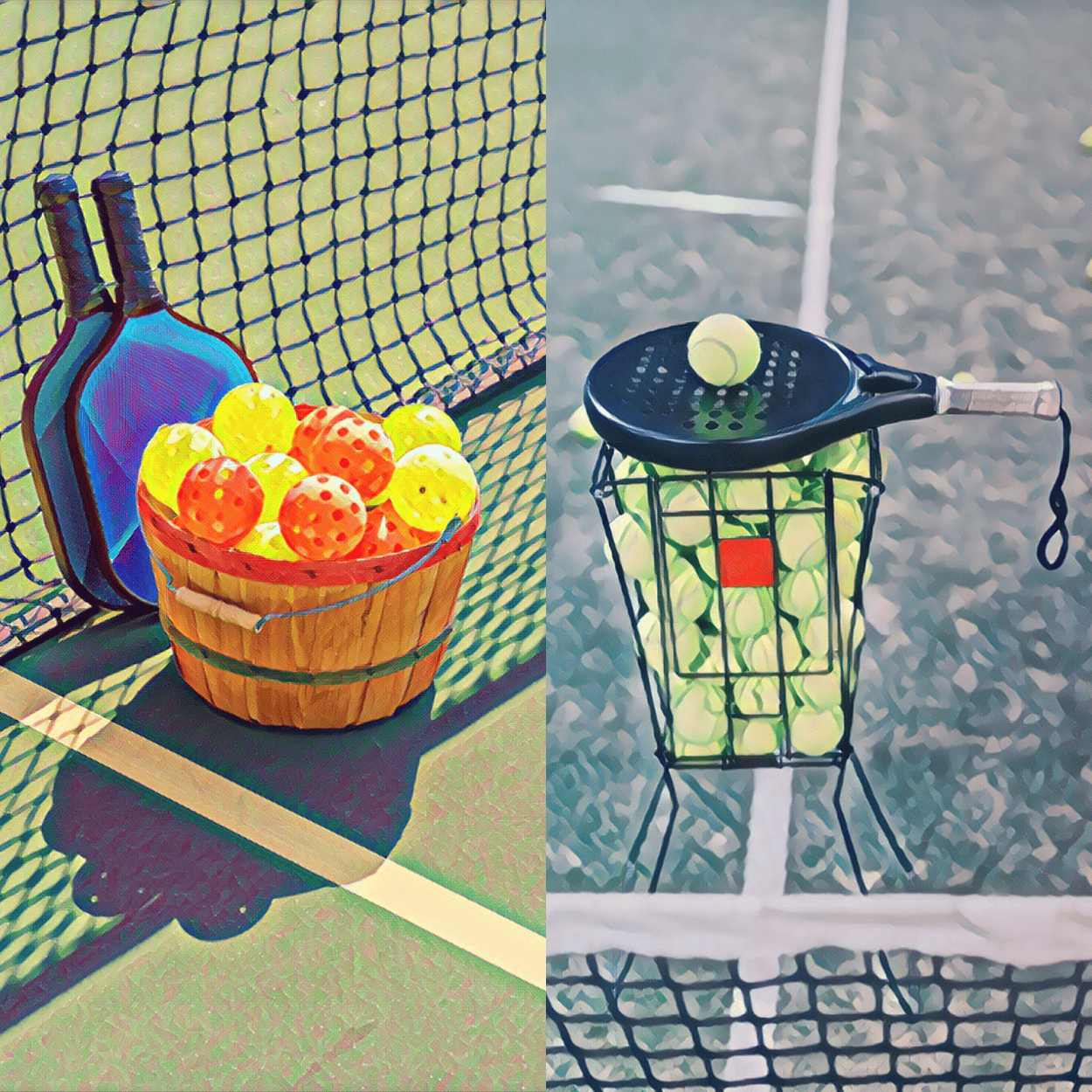Padel versus Pickleball
If you are looking for a fun and exciting way to stay fit and social, you might want to try one or two of the fastest growing sports in the world: pickleball and padel.
Both of these racket sports are inspired partly by tennis, but they have their own unique features and advantages that make them appealing to a wide range of players.
Pickleball and padel have many similarities, such as being played in doubles, having influences from tennis, and requiring underhand serves.
However, they also have multiple differences, such as the use of walls, the types of balls and rackets, and the rules of rallies.
We will explore these similarities and differences in more detail by looking at pickleball and padel in terms of their origins, equipment, rules and gameplay.
Then we will suggest how and why you might want to try out these two sports.

What is Pickleball? – Quick Overview
Pickleball combines elements of badminton, tennis and table tennis. It was invented in the USA in the 1960s by a group of friends who wanted to create a game that could be played by people of all ages and skill levels.
Pickleball is played on a small court with a net, using paddles and perforated plastic balls. It is easy to learn, fast-paced and fun.

What is Padel? – Quick Overview
Padel is a sport that blends aspects of tennis and squash. It originated from Mexico in the 1960s and has become extremely popular in Spain and other countries.
Padel is played on an enclosed court with a net, using rackets and depressurized tennis balls. It is dynamic, strategic and challenging.
1. Origin and history of pickleball
Pickleball was invented in 1965 by Joel Pritchard, Bill Bell and Barney McCallum, three friends who lived on Bainbridge Island, Washington.
They wanted to play badminton, but they could not find a shuttlecock. Instead, they improvised with a perforated plastic ball, lowered the badminton net, and used wooden paddles from a nearby shed.
They named the game after Pritchard’s dog, Pickles, who loved to chase the ball.
The game soon caught on among their families and friends, and they started to refine the rules and equipment.
They experimented with different types of balls, paddles and court sizes, and eventually settled on the current standards.
They also introduced the concept of the “kitchen”, a non-volley zone near the net, to prevent players from smashing the ball too hard.
Pickleball spread across the USA and Canada, and became popular among schools, community centers, retirement homes and recreational clubs.
In 1975, the first pickleball tournament was held in Washington, and in 1984, the USA Pickleball Association (USAPA) was formed to promote the sport and establish official rules.
Today, pickleball is played by millions of people in over 40 countries, and has become one of the fastest growing sports in North America.
2. Origin and history of padel
Padel tennis was created in 1969 by Enrique Corcuera, a wealthy businessman who lived in Acapulco, Mexico.
He wanted to play tennis, but he did not have enough space in his backyard. Instead, he built a smaller court with walls on the sides and back, and used wooden rackets and tennis balls.
He called the game “paddle tennis”, after the Spanish word for racket.
The game soon attracted the attention of his friends and neighbors, including Alfonso de Hohenlohe, a Spanish prince who owned a resort in Marbella.
Hohenlohe brought the game to Spain in 1974, and introduced it to his elite circle of guests. He also modified the paddle tennis court dimensions, added glass walls, and replaced the wooden rackets with perforated ones.
Padel spread across Spain and other European and Latin American countries, and became popular among people of all ages and backgrounds.
In 1991, the first padel world championship was held in Spain, and in 1992, the International Padel Federation (FIP) was founded to regulate the sport and organize international events.
Today, padel is played by over 25 million people in over 110 countries on over 52,000 padel courts, and has become the fastest growing sport in the world.
3. Equipment and court dimensions
Pickleball and padel are both played on courts that are smaller than traditional tennis courts and both have slightly different equipment and court dimensions.
Let’s compare them and see how they affect the gameplay.

Pickleball Equipment
Pickleball is played with a paddle and a ball. The paddle is similar to a table tennis paddle, but larger and sturdier. It has a solid face, usually made of wood, composite or graphite.
The paddle can be any shape, size or weight, as long as it does not exceed 43.18 cm in length.
The ball is made of plastic and has holes in it, like a wiffle ball.
The ball can be either indoor or outdoor, depending on the surface of the court.
The ball must have a diameter of 6.99 to 7.62 cm, and a weight of 22.10 to 26.49 grams.

Pickleball Courts
The pickleball court is 6.10 m wide and 13.41 m long, divided by a net that is 91.44 cm high at the sidelines and 86.36 cm high at the center.
The pickleball court has two service zones on each side, each 4.57 m long and 3.05 m wide.
There is also a non-volley zone, or “kitchen”, on each side of the net, which is 2.13 m long and extends to the sidelines.
Players are not allowed to volley the ball (hit it in the air) within the non-volley zone, unless they are outside the zone when they hit the ball.
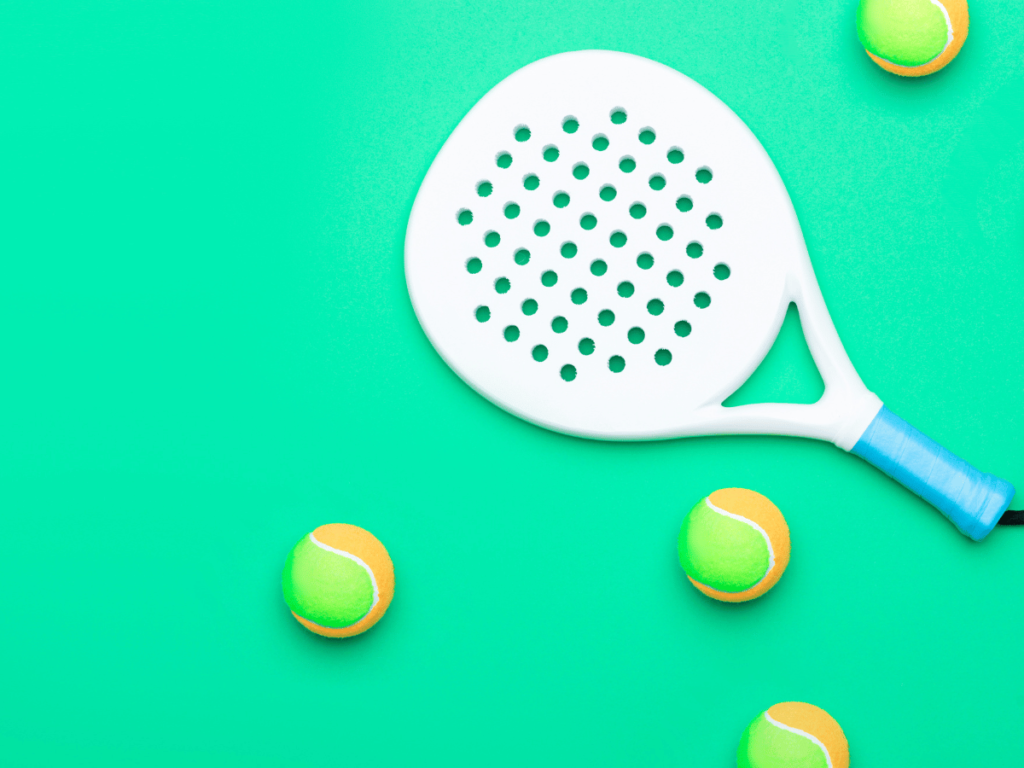
Padel Equipment
Padel is played with a racket and a ball. The padel racket is similar to a tennis racket, but shorter, thicker and perforated. It has a flat face, usually made of carbon fiber, fiberglass or metal.
The padel racket can have any shape, size or weight, as long as it does not exceed 45.72 cm in length, 24.13 cm in width, and 3.81 cm in thickness.
The padel ball is similar to a tennis ball, but smaller and less pressurized. The padel ball must have a diameter of 6.35 to 6.86 cm, and a weight of 50.80 to 56.70 grams.

Padel Courts
The padel court is 10 m wide and 20 m long, divided by a slightly modified tennis net that is 88.90 cm high at the center.
The padel court has four walls on the sides and back, which are usually made of metal mesh fencing and glass respectively.
The walls are 3 m high on the sides rising to 4 m high at the back.
The walls can be used to play the ball after it bounces on the ground, like in squash.
Padel does not have a no volley zone, so players can volley the ball anywhere on the court.
4. Rules and gameplay
Padel and pickleball are fairly similar to tennis and badminton respectively in their scoring system and gameplay, but they have some unique rules that make them distinct and interesting.
Let’s compare them and see how they affect the strategy and skill of the players.
Scoring system
Padel follows the tennis system and pickleball uses the same scoring system as badminton, with some variations.

Pickleball Scoring
In pickleball, a game is played to 11 points, and a match is usually best of three games.
A team must win by two points to win a game.
Only the serving team can score points.
Only the serving team can score points.
If a server hits the net and the ball still lands in the correct area a ‘let’ is called and the serve is replayed.
The score is announced as three numbers: the server’s score, the receiver’s score, and the server number (1 or 2).
- For example, 5-3-2 means the serving team has 5 points, the receiving team has 3 points, and the second server is serving.
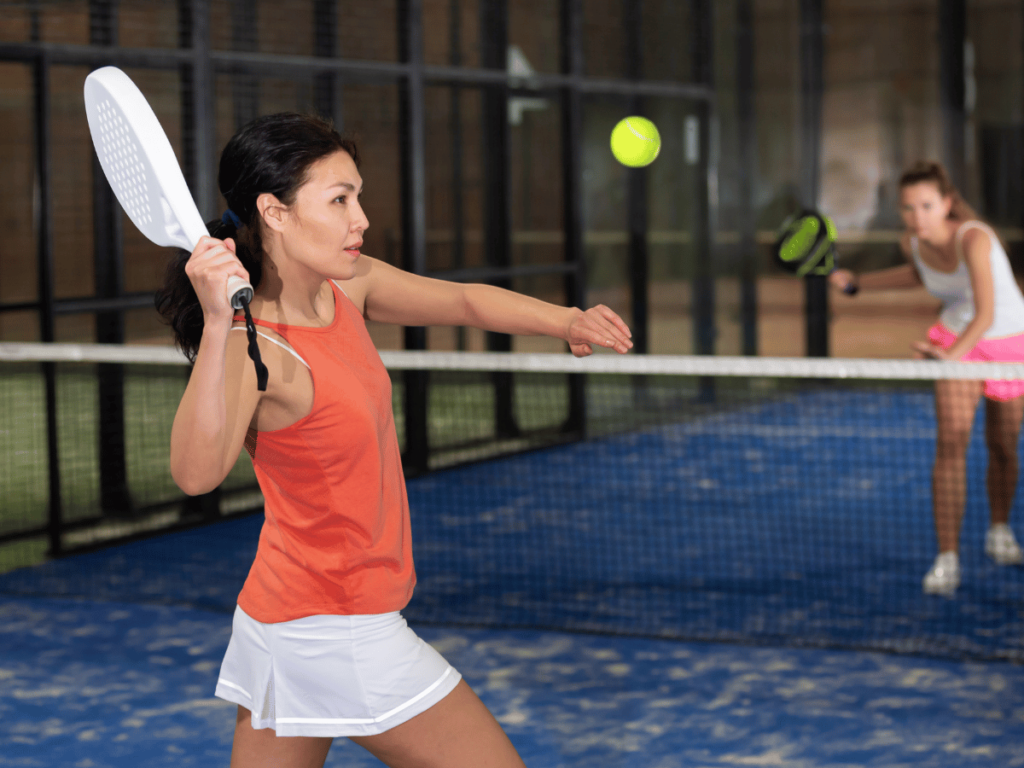
Padel Scoring
In padel, a game is played to four points (15, 30, 40, game), and a set is played to six games. A match is usually best of three sets.
A team must win by one or two points to win a game or a set depending on the agreed scoring format.
Both teams can score points regardless of who is serving.
The score is announced as two numbers: the server’s score and the receiver’s score. For example, 30-15 means the serving team has 30 points and the receiving team has 15 points.
Serve rules
Both pickleball and padel require an underhand serve, but they then have a few differences:
In pickleball:
The serve must be made diagonally crosscourt, and must clear the non-volley zone (the “kitchen”) and land in the service zone.
The ball must not touch any part of the non-volley zone line or land outside the court.
The server must hit the ball below waist level, with an upward arc, and with the paddle head below the wrist.
- The server gets only one serve attempt, unless the ball touches the net and lands in the correct service zone (a “let” serve).
The players in a team serve in sequence until they lose the point relating to their serve. After the second server loses the point the opposite team then serve.
In padel:
The serve must be made diagonally crosscourt, and must bounce in the service box before hitting any wall.
The ball can touch the net and still be valid, as long as it bounces in the correct service box.
The server must hit the ball below waist level, with an upward arc, and with the racket head below or at the same level as the hand.
- The server gets two serve attempts, like in tennis.
One team member serves for a complete game and then the opposing team serve the next game.
Rally rules
Both pickleball and padel involve hitting the ball back and forth until one team commits a fault or wins the point, but they have different rules on how to use the walls and the non-volley zone.
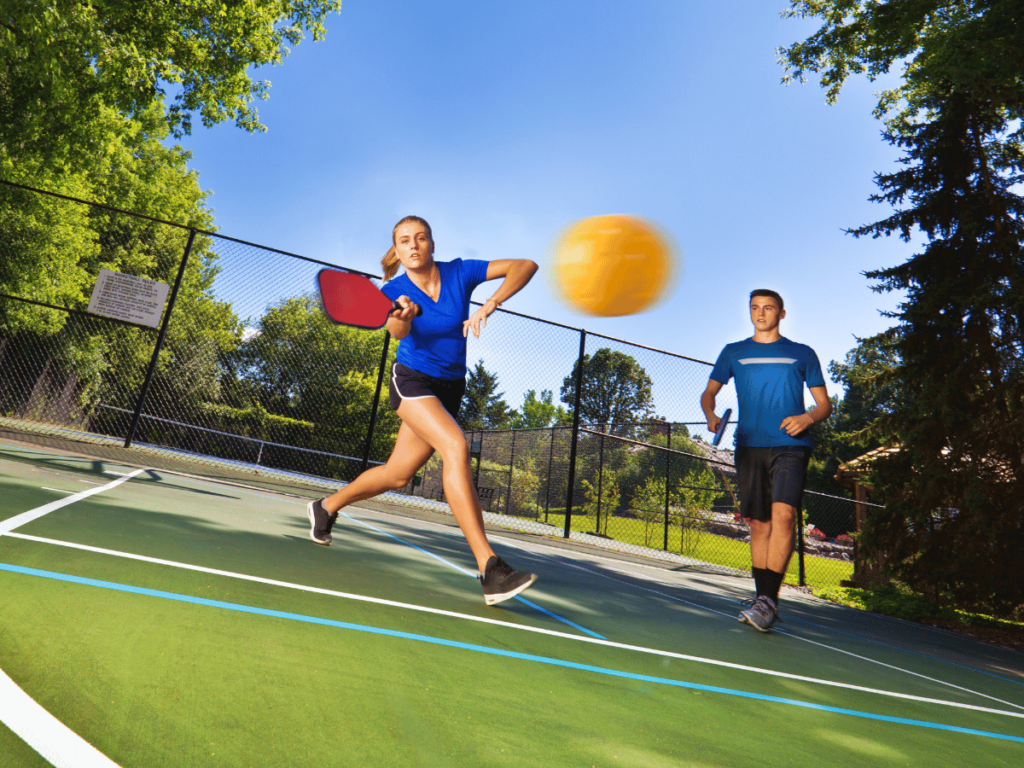
In pickleball:
The ball can be hit in the air (a volley) or after one bounce. The ball can be played off any surface, including the net. However, players cannot volley the ball within or while touching the non-volley zone (the “kitchen”), unless they are outside the zone when they hit the ball.
A fault occurs when a player or team fails to return the ball within bounds or according to any other rule.1
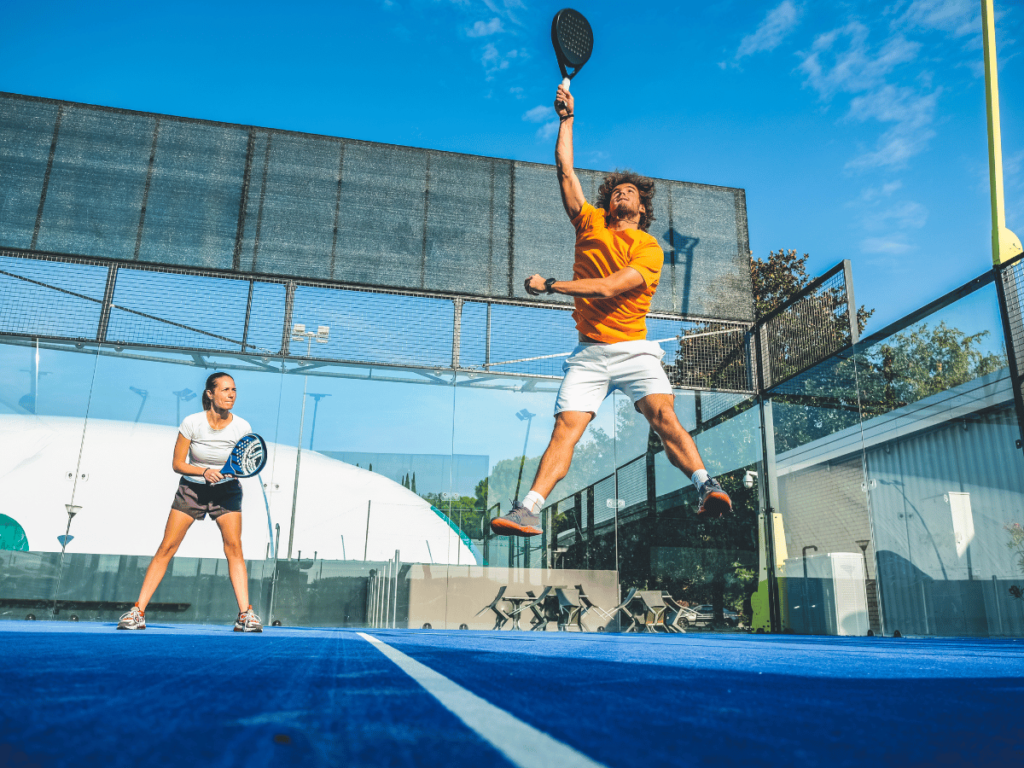
In padel:
The ball can be hit in the air (a volley) or after one bounce. The ball can also be played off any wall after it bounces on the ground. However, players cannot hit the ball directly onto any wall without bouncing first.
A fault occurs when a player or team fails to return the ball within bounds or according to any other rule.
Summary of rules and gameplay
As you can see, pickleball and padel have slightly different rules that affect their gameplay and difficulty.
Pickleball requires more precision and accuracy in serving and volleying, while playing padel often requires more power and agility in using the surrounding walls.
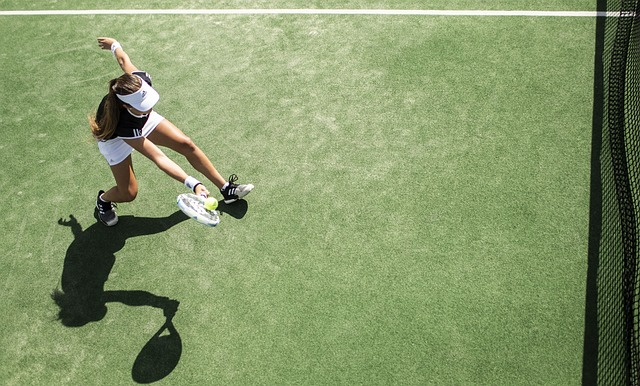
5. How to start playing padel or pickleball?
If you are interested in trying one or both of these two racket sports, here are some tips on how to choose between them:
Prefer a sport that is easy to learn, fast-paced and fun? You might like pickleball.
Prefer a sport that is dynamic, strategic and challenging? You might like padel.
If you have access to tennis courts or a badminton court, you can easily set up temporary pickleball courts with some tape and a net.
Look for local clubs or facilities that offer pickleball or padel courts for rent or membership.
If you want to learn more about the rules and techniques of pickleball or padel, you can watch some videos online or join some classes or clinics. The World Padel Tour has a great Youtube channel.
6. Why try padel or pickleball?
Both sports have benefits for your physical, mental and social health.
They can help you improve your fitness, coordination, balance, reflexes, concentration, teamwork, and communication skills.
They can also help you reduce stress, boost your mood, make new friends, and have fun.
You can be one of the millions of people playing these sports and have plenty of small talk ready when you undoubtedly meet a fellow player!
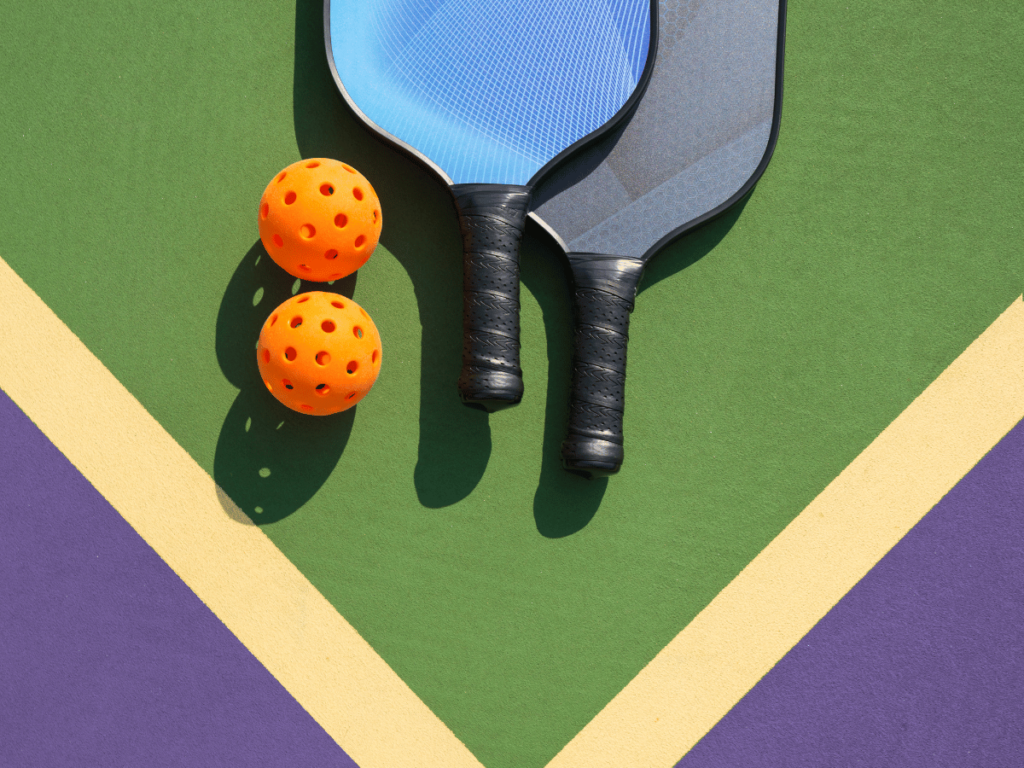
Conclusion
Pickleball and padel are two of the fastest growing sports in the world, and for good reasons. They are both fun, exciting, and accessible to people of all ages and abilities.
They are also similar to tennis, but have their own unique features and advantages that make them stand out.
In this article we have compared pickleball and padel in terms of their origins, equipment, rules and gameplay.
We hope this article has helped you understand the difference between pickleball and padel, and inspired you to give them a try.
Happy hitting!
FAQS
I understand the difference between padel and pickleball, but what is paddle tennis and what are paddle tennis courts?
Paddle tennis is the same as padel and padel tennis.
Paddle tennis courts are the same as padel courts and padel tennis courts.
Different translations and use of the word padel create this slight confusion. Many people still refer to padel as padel tennis and vice versa.
Can I play pickleball on a badminton court?
Yes, a pickleball court is the same size as a doubles badminton court. However the no volley zone (nvz) is slighlty deeper than the standard service line on a badminton court. Tape may be required and of course consent from the badminton court owner.
Which sport is louder, pickleball or padel?
Pickleball has reported decibel levels of 70 to 80 when standing close to the action and padel can have levels of 60 to 70 decibels.
Pickleball wins the noise competition.
Will I make more friends playing pickleball or padel?
If you are in Europe, Central or South America it is likely you will be more successful making friends if you play padel.
If you are in North America you should focus on pickleball to make friends.
Where can I read more about the rules of pickleball?
